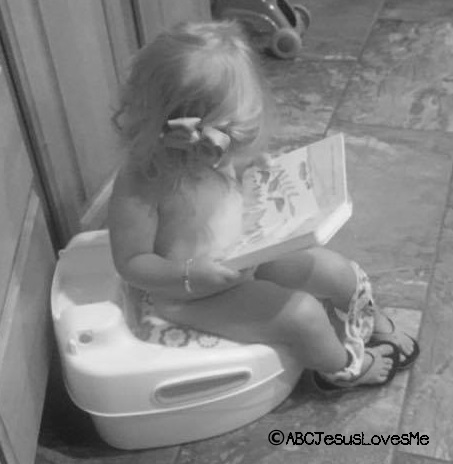 image by hillary
image by hillary
Bathing, potty training, and brushing teeth are all self-care activities that toddlers and preschoolers can learn to do. While the ABCJLM Preschool Curriculum will lead you to work on each of these activities at an age-appropriate time, here are some ideas to get you started.
Depending on the gender of the child and length of his/her hair, brushing hair can be relatively easy or more difficult. Remember that the goal is to start learning the task; not master it immediately. Be sure to have a good comb or brush. Help them use a spray bottle if needed. Teach them how to mist the hair and not spray in one concentrated place.
Thorough hand washing is one of the best defenses against germs. Teach the child that you get germs on your hands when touching things which then you pass on to other people. Proper hand washing with warm, soapy water is the only way to remove the germs.
- Passing Germs Activity: (Original Source Unknown)
Gather washable toys (large Lego or plastic blocks) and place in a tub. Coat the child's hands with flour. Have the child play with the toys for several minutes. Show the child that as he played with the blocks, the flour was transferred to the blocks (germs were transferred). Demonstrate that when you touch the flour-covered toys that you get flour on your hands (germs are transferred).
- Washing with Warm Water and Soap Activity: (Original Source Unknown)
Put a small amount of cooking oil on the child's hands. Have the child rub the oil all over her hands. Sprinkle cinnamon onto her hands. Have the child try to get the cinnamon off with a dry paper towel. Next have the child try to get the cinnamon off with cold water. Last have the child try to get the cinnamon off with warm soapy water. Discuss how the cinnamon represents germs and that warm, soapy water is the only way to get germs off her hands.
- Even When They Look Clean Activity: (Original Source Unknown)
Sprinkle salt on the child's hands and then tell the child to brush off her hands. Ask, "Are you hands clean now?" Since she brushed off the salt she will probably assume that her hands are clean. If you ask her to touch her tongue on her hands, she will be able to taste the salt. Use this example to reinforce the need to wash hands even though they look and feel clean.
- Balloon Sneeze ( Original Source Unknown )
(This activity will make a mess so you may want to do this in a room that can easily be swept.) Use this example to explain the importance of covering your mouth when you sneeze. Fill a balloon with confetti or holes from a paper hole punch. Blow up the balloon with a pump (blowing it up with your mouth could cause you to inhale some confetti) and tie. Explain that when we sneeze germs are released into the air. Pop the balloon and watch the confetti scatter. Measure how far the "germs" traveled. Demonstrate sneezing into your elbow to keep germs was flying. Another important reason to wash your hands is because germs are released into the air. Safety: Be sure to pick up all of the balloon pieces.

Bath Sponges are the easiest tool for a child to wash her body. To give you child ownership in hygiene take a fun trip to the store and allow your child to pick out her own sponge and soap. Role play with a doll how to correctly wash her face, ears, arms, armpits, stomach, legs, feet and private areas. Add a little soap to the sponge and teach the child to work from the top of the body down to her toes. Most preschoolers are not able to self-wash their hair until in elementary school, but start now helping the child rub the shampoo throughout her hair.
- My Dentist, My Friend
is a fabulous book to explain to a child what to expect on a trip to a dentist.
- Although you will still need to supervise the child brushing her teeth, allow the child to start the process. To give you child ownership in hygiene, enjoy a fun trip to the store and allow your child to pick out her own toothpaste and toothbrush. Help her put the toothpaste on the brush and encourage the child to "make bubbles" while brushing her teeth. Work up to brushing for 2 minutes or while singing the "ABC's" song twice. Talk about brushing the front, back, top, and bottom softly.
- 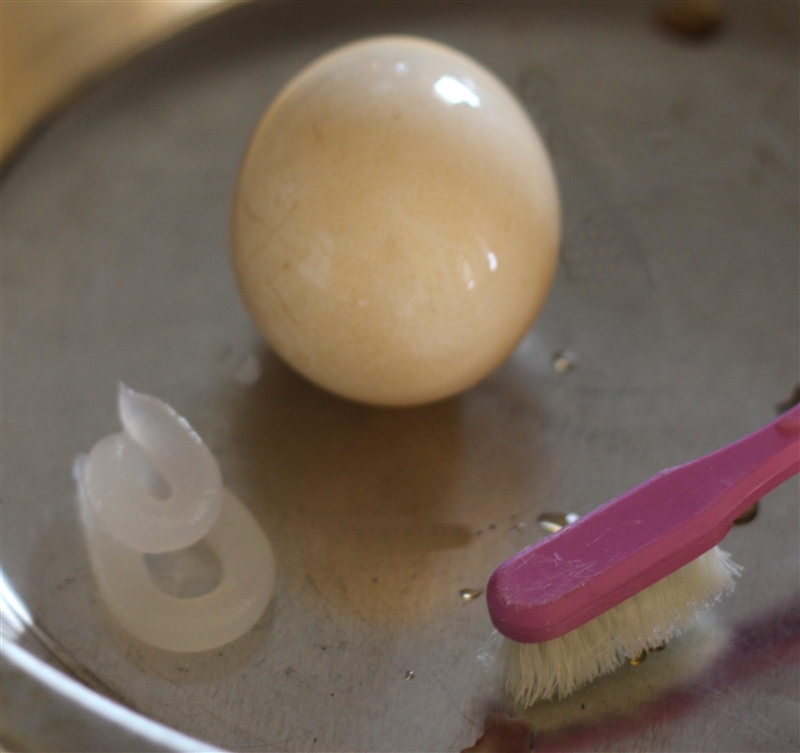
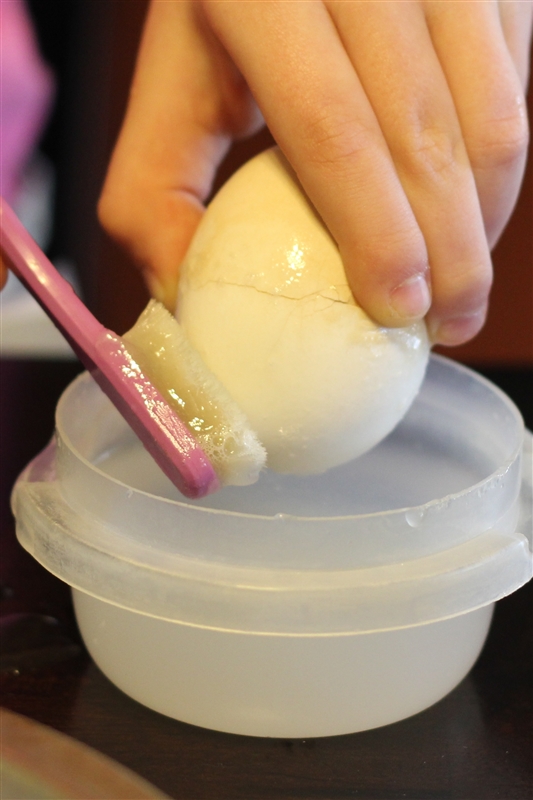 Practice Brushing Activity: (Original Source Unknown)
Practice Brushing Activity: (Original Source Unknown)
Hard-boil an egg by placing the egg in a pot filled with cold water, covering the egg with at least 2" of water. Place the pan on a burner on high heat. Bring the water to a rolling boil. Place a lid on the pan and remove it from the heat to sit for 12 minutes. Drain the egg and immediately place it in a bowl of cold water to stop the cooking process. Then soak the hard-boiled egg in dark soda (Coke or Pepsi) for a couple of hours. Explain to the child that we all have enamel covering our teeth. The enamel is the outer surface layer on our teeth that protects against tooth decay. Certain foods like starches and sugars can break down our enamel. We brush our teeth to remove the food that hurts the enamel. Show the child the stained egg and explain that the eggshell is very similar to the enamel on teeth. Ask the child how you can remove the stains on the eggshell. Place some toothpaste in a bowl and allow the child to brush the stains away with a toothbrush. Tell the child to brush gently as the "egg" requires gently brushing. Before the child finishes, examine the egg to compare the difference of where the child has brushed and where he has not. Have a small bowl of water nearby to rinse the egg off.
- 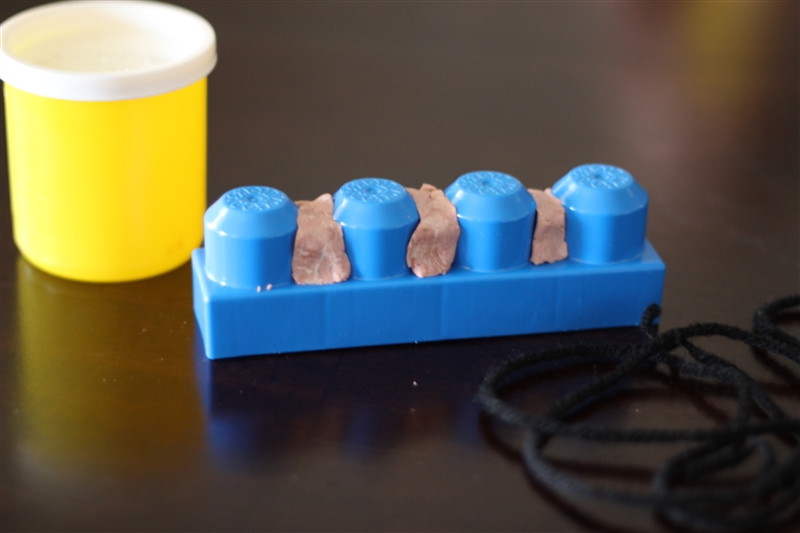 Flossing: (Original Source Unknown)
Flossing: (Original Source Unknown)
Using a large, long Mega Block, place play dough between the block pegs. Then, stretch a large rectangle piece of play dough to lay over the top of the block. Show the model to your child and say, "When we eat, food particles gather on and around our teeth. It is important that we remove these particles before they damage the enamel on our teeth." Ask, "How can we remove the particles?" (brush) Ask, "Where on our teeth do we need to brush?" Slowly remove the play dough around the teeth demonstrating the importance of brushing the top and sides. Play dough will be left between the teeth. Ask, "Did we get the teeth clean?" (No) Ask, "How can we remove the rest of the particles?" (floss) Demonstrate how to wind the "floss" around your fingers and saw between the teeth. Also, show the child how to floss along the sides of the each tooth. Using yarn as you would dental floss, allow the child to remove the "plaque" between the "teeth."
- Brushing and Flossing with an Egg Carton: (Original Source Unknown)
Turn an egg carton upside down and sprinkle it with baking powder. Brush the "teeth" clean with a toothbrush and "floss" using yarn.
- 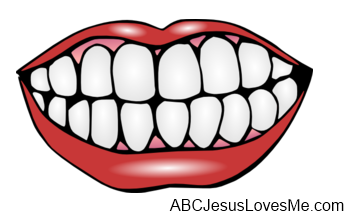 Paint Brush Your Teeth using an old tooth brush.
Paint Brush Your Teeth using an old tooth brush.
- 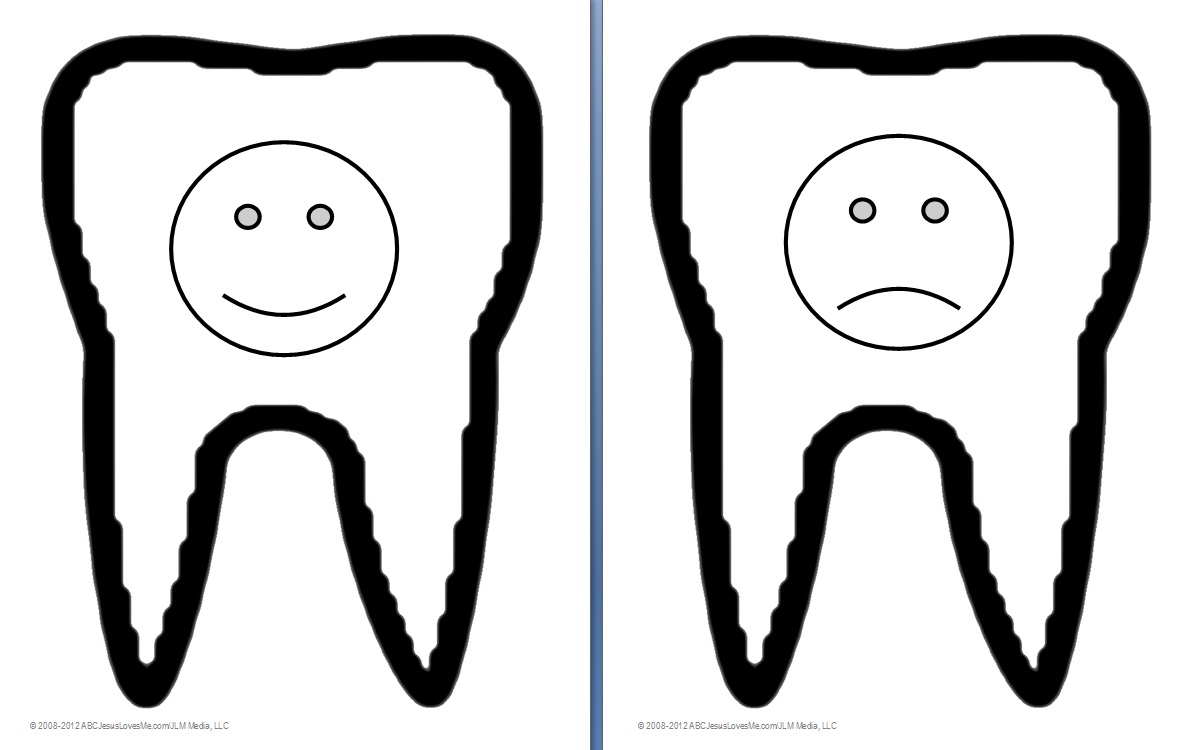 Happy and Sad Teeth Sorting Activity:
Happy and Sad Teeth Sorting Activity:
Print the Happy and Sad Tooth. Cut pictures of various food from magazines and grocery store ads. Sort the food between the two teeth depending on what are good and bad for your teeth.
- 
In Teddy Visits the Dentist
, the reader experiences a dental appointment with Teddy. He rides in the dental chair, learns about the instruments, and has his teeth cleaned. Then Teddy learns to care of his teeth. Also included in the book is a glossary and two tooth charts. What makes these two books extra special is that the author, Elizabeth Mahadeo, has 15 years experience as a Registered Dental Hygienist and Dental Assistant. She is writing about a topic - in a child like manner - because she knows the subject matter well.
- 
In the second volume, Teddy Gets a Filling, Teddy returns to the dental office for help with a "sick" tooth. Dr. Dentin helps Teddy's sick tooth fall asleep and then cleans the cavity and places in a filling. Again this book contains a glossary and charts.
I am happy to report that I successfully potty trained four children. Woohoo! But, I remember the days when doubts entered my mind. Potty training is one of those parenting tasks that many dread. It is messy, frustrating, and is almost completely controlled by a child whose favorite word is “No!” Praise Jesus…training got easier with each child as I learned secrets that made the process more successful. Click to read the Potty Training Cheat Sheet
Fitness Ideas
Create a list of fun exercise ideas to do as a family. Choose and schedule an activity to do each day.
My Favorite Exercise
On a piece of paper, have the child draw himself doing his favorite exercise. Discuss why it is his favorite exercise and what is does for his body.
This page may contain affiliate links. Please read our disclosure policy.